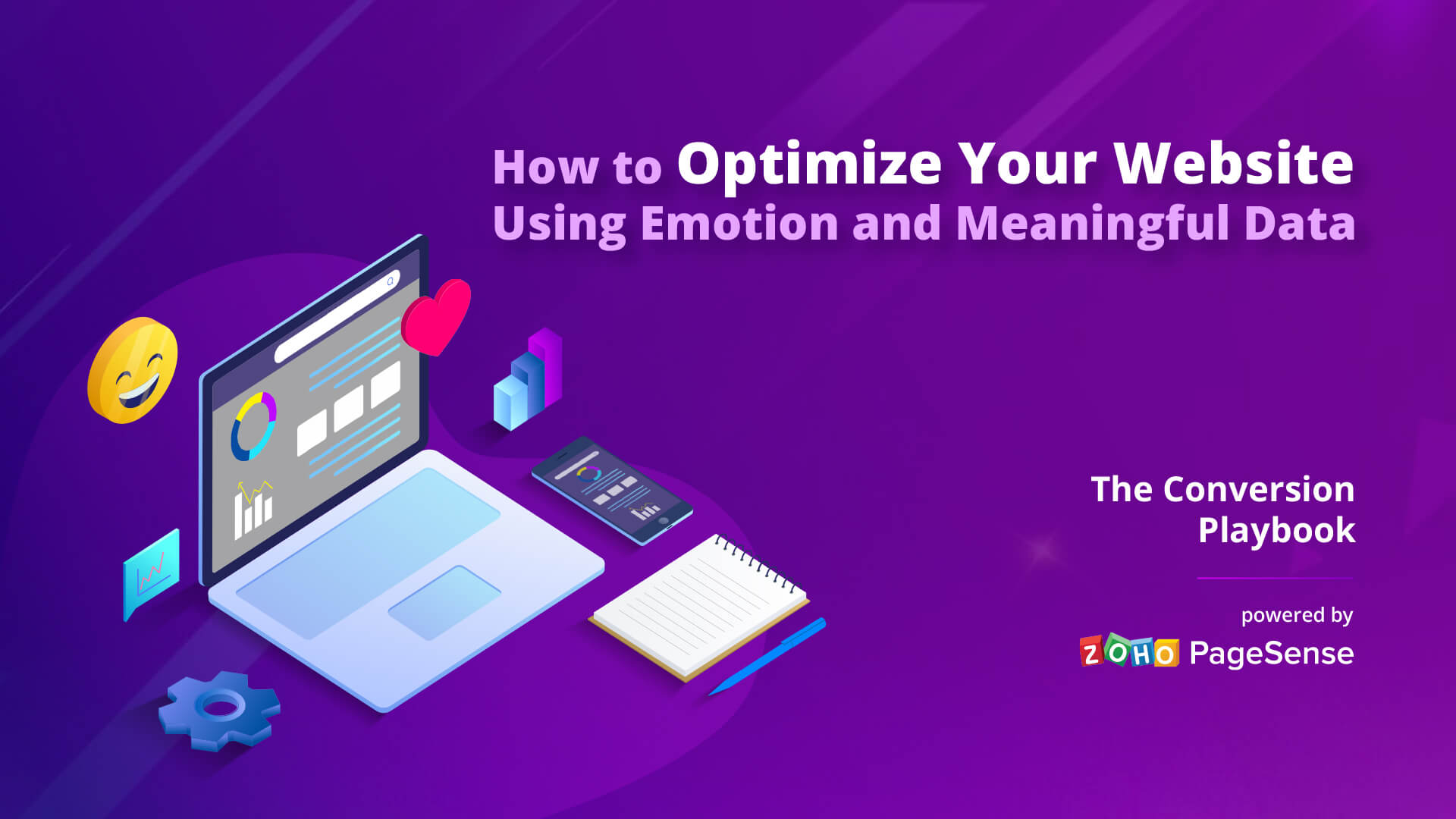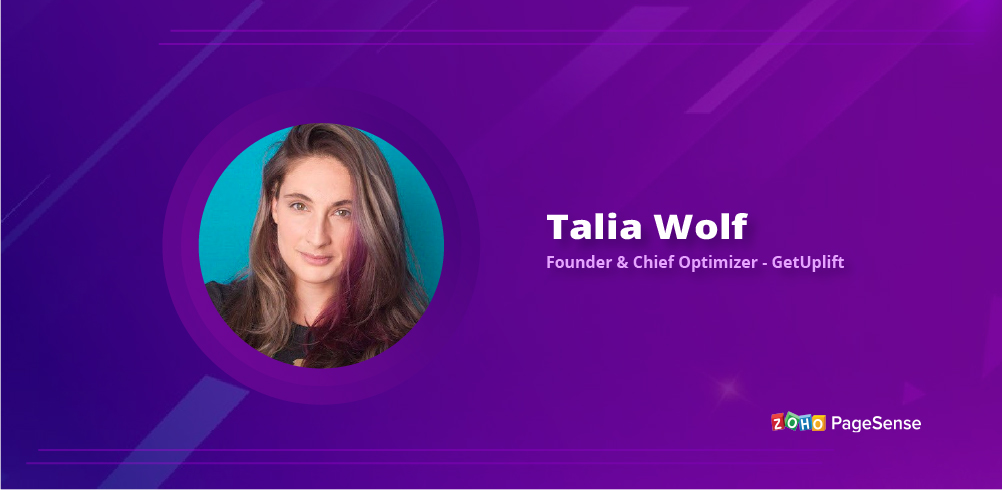- HOME
- How to optimize your website using emotion and meaningful data
How to optimize your website using emotion and meaningful data
- Last Updated : November 10, 2023
- 464 Views
- 7 Min Read

As an optimizer, the first question you should ask your client is, "Why do people buy from you?"
The most popular answers you're likely to receive are:
The product, features, shipping, pricing, and the solution that they're offering.
However, if that's really why people bought from them, the biggest brands in the world would just talk about what they sell and why they're the best.
Over the years, we've somehow convinced ourselves that this is how people buy. That when someone decides to download a guide, start a free trial, or buy a product, they go through an elaborate process of contemplating pros, cons, what makes sense, and what doesn't before making a decision. However the biggest brands in the world and scientists know that this isn't how people make decisions in life. Most of your customers just listen to their heart and not their brain.
Antonio Damasio, a renowned neurologist, ran an interesting experiment on people who had brain damage. These people were fully functional, but the only problem was that they couldn't feel any emotions. Now this meant they could do everything just like any other person in the world, but they had one big issue – they couldn't make any decisions. They couldn't even decide what sandwich to have for breakfast because the emotion was taken out of the equation. So many psychologists, psychiatrists, and scientists have proven time and again that there's always an emotional component in every decision we make in life.
No matter your product or service, what people really care about isn't the what, it's the why. It always boils down to the emotional benefit they get, and that's why when you look at the biggest brands in the world, they don't talk about the product or how much it costs, they talk about the feeling that you get from using that product, from hiring them, or from taking on their solution.
The emotional targeting methodology
Conversion optimization isn't about changing elements on the page—it's about solving people's problems. You have to understand the emotions that drive people's decisions, the pain points they experience every day, and the challenges that keep them up at 3:00 AM. If you can really tap into how people make decisions in life and the problems they're facing, you can create a high-converting experience for them. That's essentially why the emotional targeting methodology was developed.
Now, the core of the emotional targeting methodology is based on answering four questions:
What pain do my customers feel before finding a solution?
What are the emotional triggers that drive their decision-making?
What are the hesitations and concerns before converting?
What do they want to feel after finding a solution?
If you can answer these, you'll know exactly what works for your page and what strategy to choose. And by getting to know what drives your visitor's decisions, their hesitations, objections, concerns, and the outcome they desire, you can create high-converting landing pages, emails, and websites.
There are over 233 different emotional triggers, and here are the four steps that you can follow to identify those triggers and their results.
Identify the stages of awareness
Every person in your funnel is coming from a different stage of awareness, and it's on you to understand where they are in this process. We can broadly classify these stages into five types:
Unaware
People who are unaware essentially have no idea that they have pain. They're just walking around without a clue that there's a problem that needs solving. Your only job is to make them pain aware.
Pain aware
Pain aware people know that they have an issue. For example, a person knows that they have a problem communicating with their team, which is distributed around the world, and it's something that's driving them nuts. But they're not aware of the solutions out there, so they just walk around carrying the pain.
Solution aware
Solution aware people know they have pain and are actively looking for solutions. These are the people who are reading blog posts, skimming articles, and searching on Google for different options that could solve their problem.
Product aware
Then you have the product aware people. These are the people that have been doing their homework. They're in the process of evaluating who is the right person for them. They might have even heard of you but are not completely sure that you're the right one for them.
Moreover, this is actually the first point in the entire funnel when you start talking about yourself. Everything before this is about the customer—their pain, how it's agitating them, how it affects their life, and talking about the different solutions that they've tried.
The product aware people are the people that are in the process of evaluating your offer. This is where you can start getting into your features and your pricing.
Most aware
Most aware is essentially the people who are ready to convert—you just have to show them the right button.
People come into your funnel at different paces. It is important for you to identify what stage of awareness they're in. When you know that someone is in one stage, your only goal is to move them to the next one. You don't have to move unaware people to the most aware stage, you just have to make them aware of the pain. Similarly, you just have to turn pain aware people into solution aware people and slowly move them through the funnel.
Now, you can identify these stages by doing either of these simple things:
Keyword research
Start looking at what people are using to land on your website. You can do this with your SEO tools. For example, someone searching for your brand on Google is product aware. Whereas the people who search for a particular article are more likely to be solution aware.
Landing pages
This is the easiest and most obvious indicator. If people are landing on your pricing page, they're more likely to be product aware, while people who land on your blog can be categorized as solution aware.
Understanding this is a key part of identifying what content you should be including on your client's website.
Speak to your customers
If you're not actively speaking to your customers through surveys, polls, or interviews, you're wasting a ton of time and money. It's just like spending years planning an amazing product that you're sure people will love, only to discover that they don't really need it at all. And that's because you didn't really get into people's feelings, minds, hesitations, concerns, and desires. So always remember that customer feedback and visitor surveys should be an imperative part of your business strategy.
Here are some questions you should be asking your customers:
What pain does the product solve for you?
What was going on in your life that made you search for this solution?
When you weren't using <this solution>, how did you solve this problem?
If you couldn't use <this solution> anymore, what would you miss most?
Speak to your team
Once you speak to your customers and identify their emotions, the next step is talking to your team. This is to understand what your team feels and to know how they're treating your customers.
These are the questions you should be asking your team:
What pain do we solve for the customer?
What persuades customers to take action?
Why do you think people buy our solution?
What could we do better?
Check out your competitors
Analyzing your competitors doesn't mean copying from them. You're just trying to figure out what people (who essentially should be buying from you) are saying about your competitors. What you're looking for are testimonials, reviews, or complaints. All of these submissions by your competitors' customers are what you can use to your advantage. This will also help you reflect on where you stand and what you should be talking about on your website.
Write what people want to read
Messaging is the key to tapping into emotions and ultimately increasing your conversions. This way, you don't have to spend a ton of money on insane A/B tests. Just understanding your audience and writing the right copy that resonates with their emotions can be the secret to your success.
Emotions affect decisions, decisions affect conversions, and conversions affect revenue. So what you need to do is stop asking "What is my goal?" and start asking "What is my customer's goal?", because only when your customers achieve their goals will you achieve your own!
Conversion Capsule from ZohoPageSense aims to bring you conversion rate optimization best practices from CRO experts around the world. In this blog, we've converted Talia Wolf's session from "The Optimization Summit" we hosted, as digestible takeaways for you.

Talia Wolf is the founder and chief optimizer at GetUplift. She helps businesses understand their audience better, fix the leaks in their funnel, and increase conversions with a customer-centric optimization process. She uses emotion and persuasion to optimize her clients’ websites and funnels and generates 10x the leads, sales, and revenue for them.